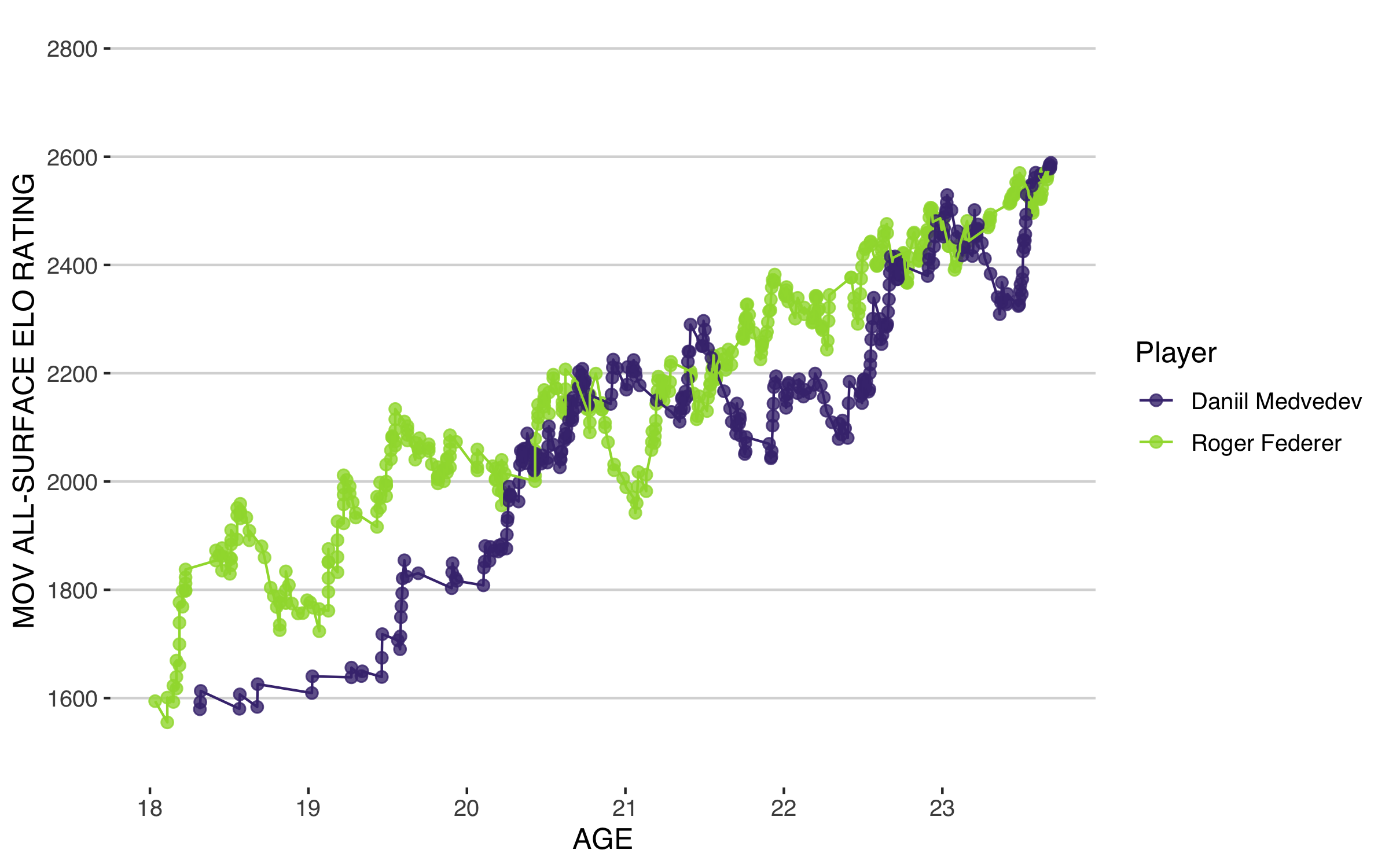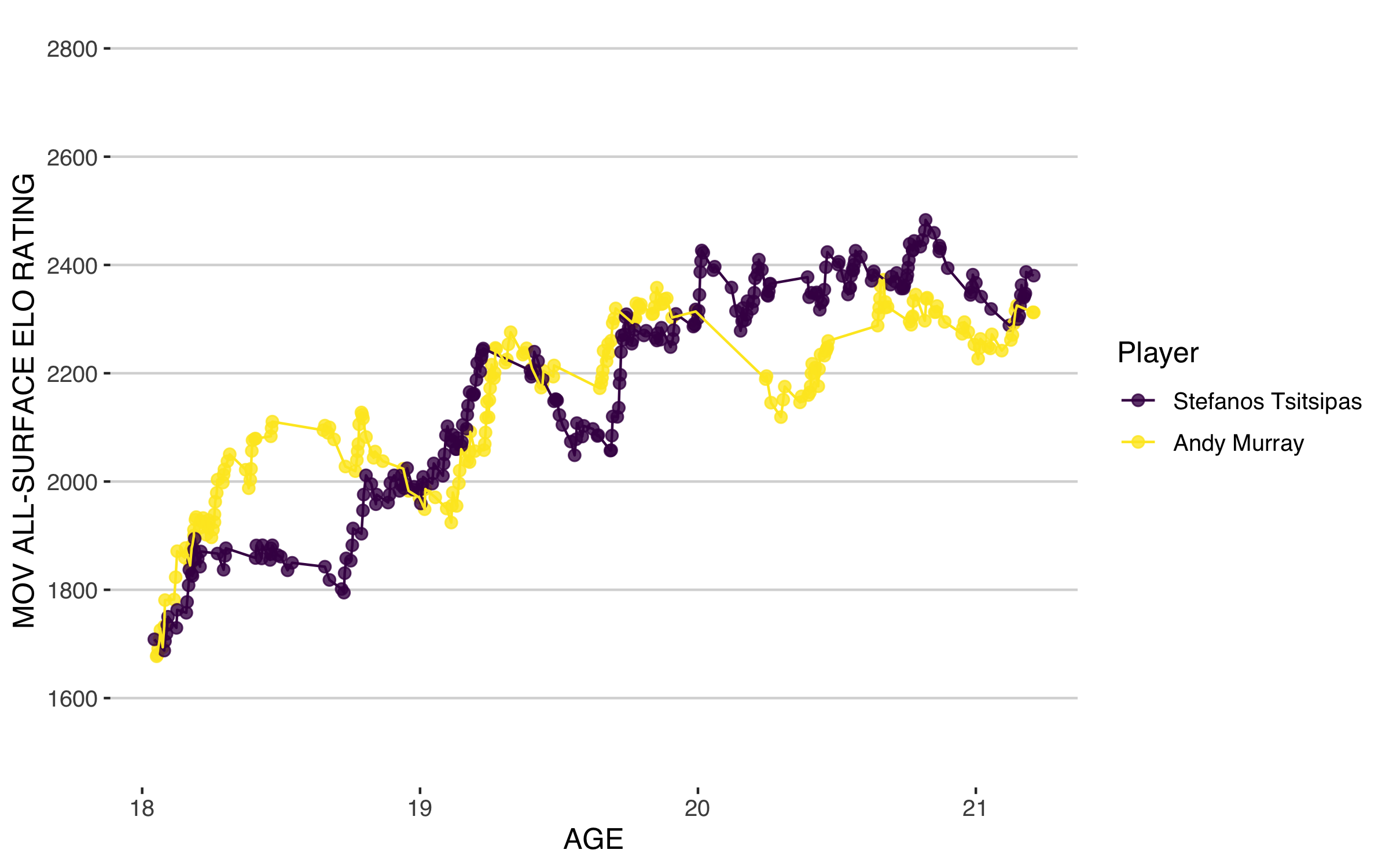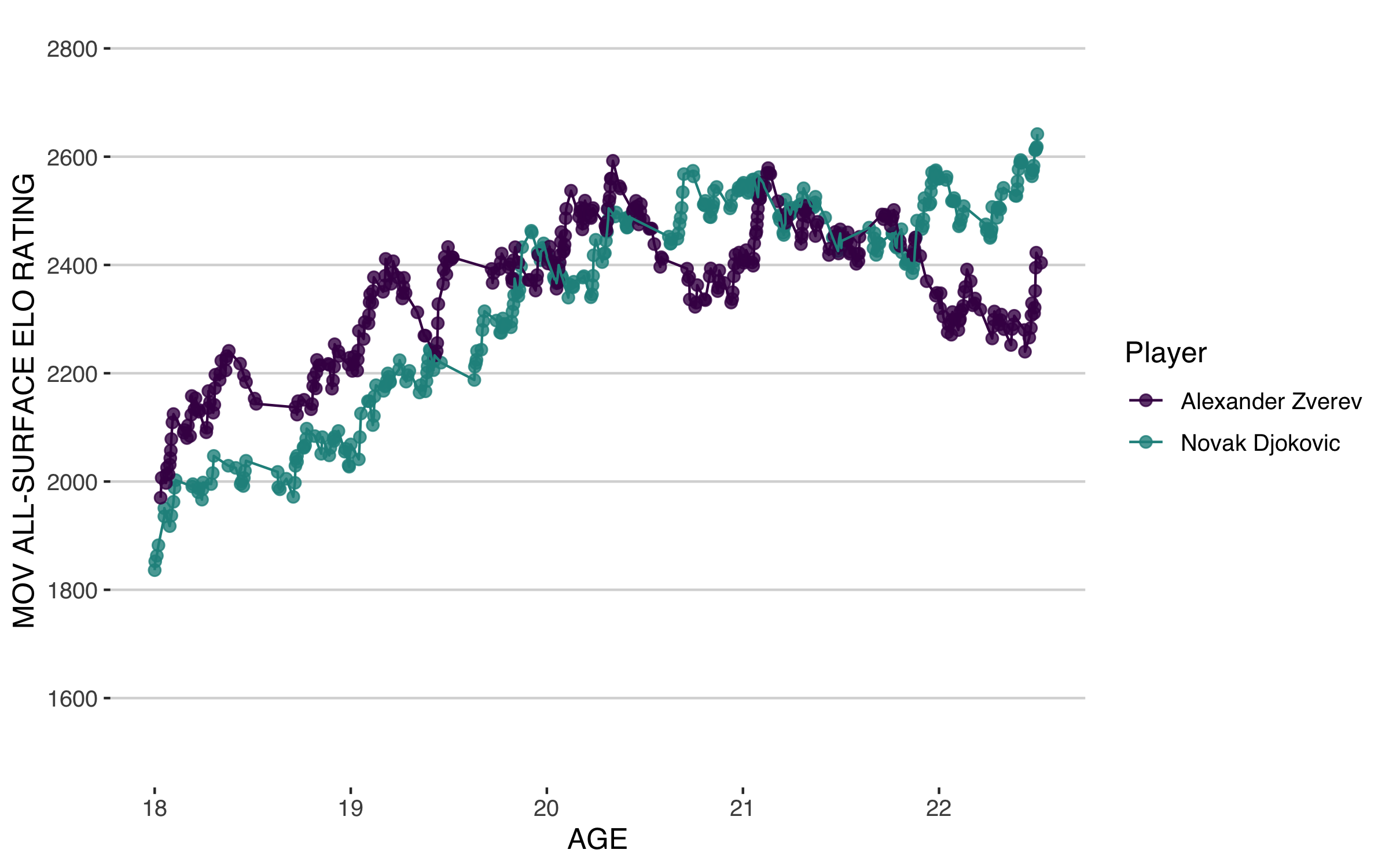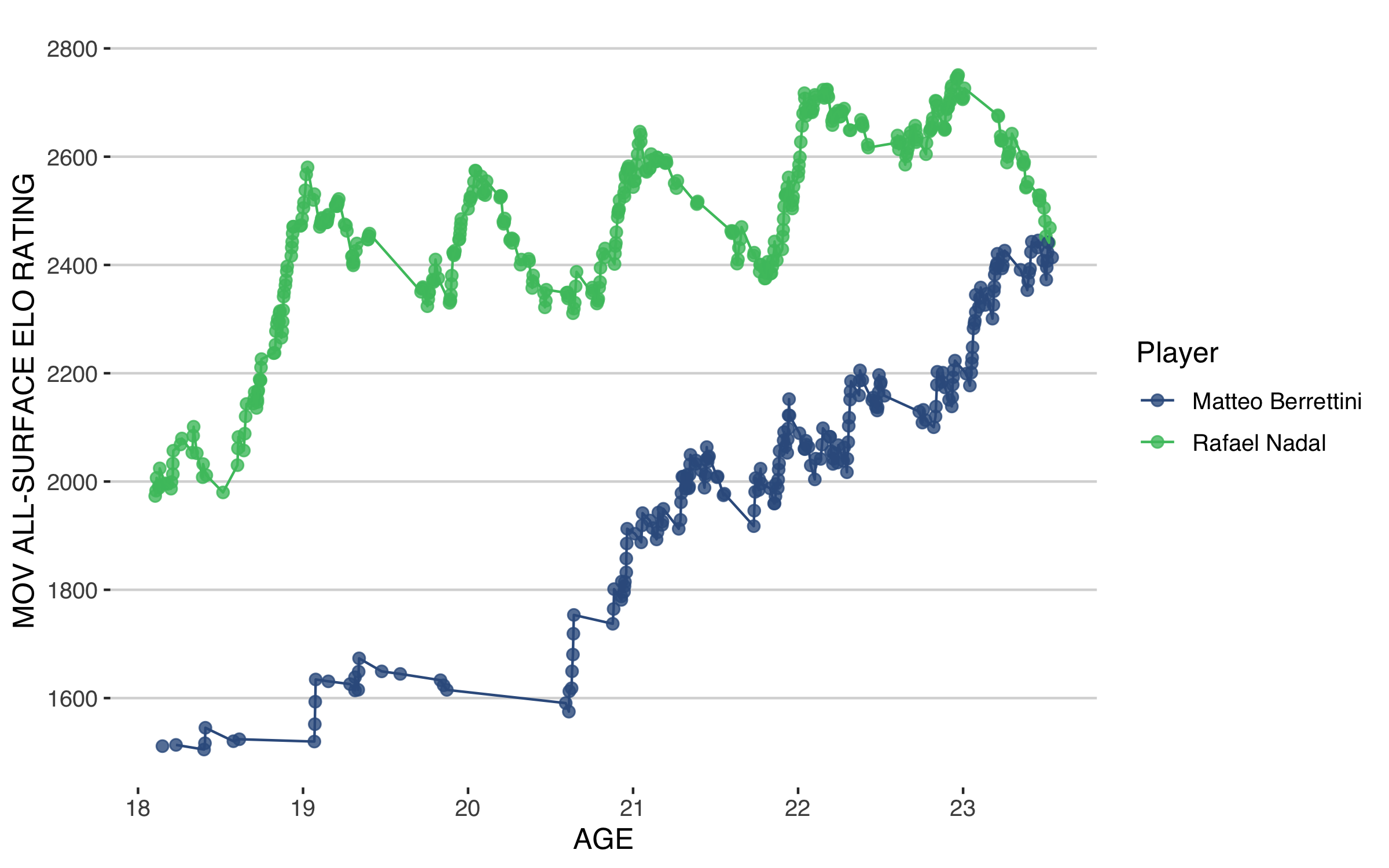Are the First Years of the 'Next4' Anything Like the Big4?
We are likely to look back at the end of the 2019 season as the start of a generational breakthrough in men’s tennis. With four of the most impressive 23-and-unders on tour—Daniil Medvedev, Stefanos Tsitsipas, Alexander Zverev, and Matteo Berrettini—reaching the semifinals and taking out 2 of the Big 4 on their way there, it is feeling like we are on the brink of a ‘Big 4’ takeover by the ‘Next 4’. What can the early career trajectories of the Big 4 tell us about which if any of these young stars might follow their footsteps?
As the last ATP Masters event of the season is getting underway in Paris, two spots are still up for grabs for the ATP World Tour Finals. For making the cut for the first time in their career, Daniil Medvedev and Stefanos Tsitsipas have already made the draw a compelling one. It will not only be a fitting culmination to the best seasons so far of their careers it will also solidify the impact their generation—the players born in the late 1990s—is having on the top of men’s tennis.
The four standouts of that generation in 2019 have been Daniil Medvedev, Stefanos Tsitsipas, Alexander Zverev, and Matteo Berrettini. Each of these players has made their presence known with impressive wins over top 5 players in the past few months; Medvedev emerging the most decorated among them by reaching the final of the US Open and winning two tour titles soon after.
The fact that four 23-and-unders have made some of the most impressive progress in men’s tennis this year makes comparisons to the Big 4 especially tempting. While we are usually focused on how the young phenoms matchup against those legends today, it is also interesting to wonder how they matched up when the Big 4 were at a similar stage in their careers. Put another way, who of the Next 4 are on a similar course to any of the Big 4?
Player ratings are the best tool we have for making cross-generation comparisons, as the difference of 100 rating points, for example, reflects the same relative strength from one period to the next. This means that two players who have a similar ratings trajectory at the same age would have had to have similar results against similarly difficult opponents. Matching early trajectories is no guarantee that these players' trajectories would follow each other in lock-step but it would be more probable that their trajectories would stay close than they would dramatically diverge.
So which of the under 24 Big 4 ratings trends are closest to the trends of the ‘Next 4’?
Starting with Daniil Medvedev, the biggest threat of the emerging ‘Next 4’ who is currently ranked No. 4 overall in the men’s singles ratings, we find his path has so far been closest to Roger Federer. Federer is often regarded as a late bloomer but Medvedev had a slightly slower start by comparison. Still by 21 both were playing at a 2200-level and a 2500-level just two years later. Medvedev has not been as consistent in his results from age 21 to 23 as Federer was. Whether that has been owing to poor scheduling choices or some other factor might only become clearer in the coming years.

If you had to pick two players with the most different on-court personalities it would be hard to come up with two more contrasting players than Andy Murray and Stefanos Tsitsipas. But temperaments aside, when it comes to their early-career results, the commonalities between these two are striking. In particular we can see that both had a sharp spike to get to a rating of 2200 while still just 19. Their growth continued to rise but on a much steadier pace up to age 21. Tsitsipas has been the steadier of the two, hovering around a rating of 2400 throughout age 20.

If we only looked at Zverev’s ratings up to age 21, we would have thought his career path was the spitting image of a young Novak Djokovic. At age 18, both players were already at an enviable level of 2000. They continued to add to that level at close to a constant rate of 200 points per year up to 21. But recent times have been something of a mini slump for Zverev and he has drifted away from Djokovic’s upward path.

Matteo Berrettini is the odd one out among the Next 4. Berrettini was playing at an average level until 21. From that point on he has caught fire and made a miraculous surge that is on par with how Nadal launched up to the top of the ratings at age 18. Nadal and Berrettini are the two most different trajectories among all of the 8 players we’ve been discussing, Berrettini for his very late rise and Nadal for his sudden steep rise and periodic jumps during the clay season.

With many doubtful that any era of men’s tennis could surpass the golden era that the BIg 4 has given us, it is astonishing how many similarities we find between the ratings trajectories of the ‘Next 4’ stars and the ‘Big 4’ they all look up to. Although this would seem to suggest a strong chance of another era of 4 dominant competitors at the top of the game, it defies belief at the moment because the Big 4 are still around, standing in the way of the best among the nextgen. Whether and how these up-and-comers will find a way to carve out their own path in the coming seasons could make them some of the most fascinating years of tennis any of us have seen.

